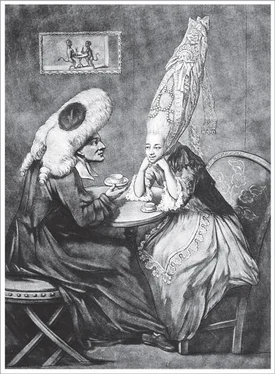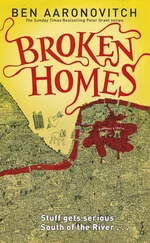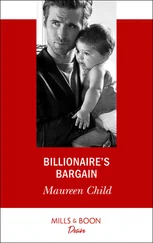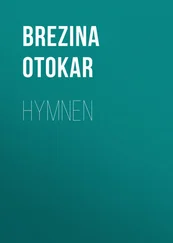Bill Bryson - At Home
Здесь есть возможность читать онлайн «Bill Bryson - At Home» весь текст электронной книги совершенно бесплатно (целиком полную версию без сокращений). В некоторых случаях можно слушать аудио, скачать через торрент в формате fb2 и присутствует краткое содержание. Жанр: Старинная литература, на английском языке. Описание произведения, (предисловие) а так же отзывы посетителей доступны на портале библиотеки ЛибКат.
- Название:At Home
- Автор:
- Жанр:
- Год:неизвестен
- ISBN:нет данных
- Рейтинг книги:4 / 5. Голосов: 1
-
Избранное:Добавить в избранное
- Отзывы:
-
Ваша оценка:
- 80
- 1
- 2
- 3
- 4
- 5
At Home: краткое содержание, описание и аннотация
Предлагаем к чтению аннотацию, описание, краткое содержание или предисловие (зависит от того, что написал сам автор книги «At Home»). Если вы не нашли необходимую информацию о книге — напишите в комментариях, мы постараемся отыскать её.
At Home — читать онлайн бесплатно полную книгу (весь текст) целиком
Ниже представлен текст книги, разбитый по страницам. Система сохранения места последней прочитанной страницы, позволяет с удобством читать онлайн бесплатно книгу «At Home», без необходимости каждый раз заново искать на чём Вы остановились. Поставьте закладку, и сможете в любой момент перейти на страницу, на которой закончили чтение.
Интервал:
Закладка:
Improvements in textile and printing technologies transformed decorative possibilities beyond furniture as well. This was the age that saw the widespread introduction of carpets, wallpapers, and bright fabrics. Paint, too, became available in a range of bright colors for the first time. The upshot is that, by late in the eighteenth century, households were full of features that would have been the wildest indulgences a century before. The modern house—a house such as we would recognize today—had begun to emerge. At last, some fourteen hundred years after the Romans withdrew, taking their hot baths, padded sofas, and central heating with them, the British were rediscovering the novel condition of being congenially situated. They hadn’t entirely mastered comfort yet, but they had certainly discovered an alluring concept. Life, and the expectations that went with it, would never be the same again.
There was, however, one consequence in all this. The advent of comfort in the home, in particular the widespread use of soft furnishings, made furniture much more vulnerable to stains, burns, and other careless abuses. In an effort to save the most valuable furniture from the worst of the risks, a new type of room was created, and it is there, conveniently, that we go next.
* A furlong in horse racing is 220 yards, or one-eighth of a mile, but farming furlongs originally were of no particular length. The word means simply “long furrow.”
* Ayrshires were the creation of Bruce Campbell, inventive second cousin of James Boswell, who was put in charge of the family estate in Scotland only after Boswell himself declined the responsibility, preferring a life of conversation and refined debauchery in London to dairy farming in lowland Scotland. Had Boswell been more dutiful, we would have lost not only his great Life of Johnson but also one of the world’s best breeds of dairy cattle.
* Though the name is now pronounced “Van-bruh” or “Van-burra” (like the terminal diphthong of “Edinburgh” or “Barbara”), it appears to have been pronounced “Van-brook” in his own lifetime. It was frequently so spelled.
* Whig is a shortening of Whiggamore , the name for a group of seventeenth-century Scottish insurgents. Where Whiggamore itself came from is uncertain, as is the question of how it then suggested itself as a suitable name for a group of powerful English aristocrats. It was first applied derisively by the Tories, but embraced with pride by the target group. Exactly the same thing happened with the term Tory .
* In a large house, room numbers are generally notional. It depends on the extent to which you count storerooms, closets, and the like as separate rooms (and also no doubt how carefully one counts). The published numbers for the total rooms at Blenheim range from 187 to 320—quite a disparity.
* It was also, come to that, the age of the celebrity craftsman. One such was the great carver Grinling Gibbons, who lived from 1648 to 1721. His interesting Christian name was his mother’s maiden name. He grew up in Holland, of English parents, and came to England in about 1667, after the restoration of Charles II as king. He settled in Deptford, in southeast London, where he made a very basic living carving figureheads for ships. One day in 1671, John Evelyn, the diarist, chanced to pass his workshop and was immediately taken with Gibbons’s skill and personable manner, and possibly with his good looks. (Gibbons was by all accounts stunningly good-looking.) He encouraged the young man to take on more challenging commissions and introduced him to people of influence, such as Christopher Wren.
Thanks to Evelyn’s support, Gibbons became very successful, but most of his wealth actually came from running a workshop that produced statuary and other stonework. It was Gibbons, it appears, who came up with the idea of depicting British heroes as Roman statesmen, in togas and sandals, and this made his work in stone extremely fashionable. Though he is now widely thought of as the greatest woodcarver in modern times, he was not especially famous for it in his own lifetime. For Blenheim Palace, Gibbons produced £4,000 worth of decorative stonework but only £36 worth of wood carving. Part of the reason his wood carvings are so valued today is that there aren’t very many of them.
* Although he is little read now, Walpole was immensely popular in his day for his histories and romances. He was a particularly adept coiner of words. The Oxford English Dictionary credits him with no fewer than 233 coinages. Many, like gloomth, greenth, fluctuable , and betweenity , didn’t take, but a great many others did. Among the terms he invented or otherwise brought into English are airsickness, anteroom, bask, beefy, boulevard, café, cause célèbre, caricature, fairy tale, falsetto, frisson, impresario, malaria, mudbath, nuance, serendipity, somber, souvenir , and, as mentioned a few pages back, comfortable in its modern sense.
• CHAPTER VIII •
THE DINING ROOM
I
By the time Mr. Marsham came to build his house, it would have been unthinkable for a man of his position not to have a formal dining room in which to entertain. But just how formal and how spacious and whether situated at the front of the house or the back are matters that would have required some reflection, since dining rooms were still novel enough that their dimensions and situation could not be assumed. In the end, as we have seen, Mr. Marsham decided to eliminate the proposed servants’ hall and give himself a thirty-foot-long dining room—big enough to accommodate eighteen or twenty guests, a very large number for a country parson. Even if he entertained frequently, as would seem to be indicated, it must have been a lonely room on the nights he dined alone. At least the view across to the churchyard was a pleasant one.
We know almost nothing about how Mr. Marsham used this room, not simply because we know so little about Mr. Marsham but also because we know surprisingly little about certain aspects of dining rooms themselves. In the middle of the table was likely to have stood an object of costly elegance known as an epergne (pronounced “ay-pairn”), consisting of dishes connected by ornamental branches, each dish containing a selection of fruits or nuts. For a century or so, no table of discernment was without its epergne, but why it was called an epergne no one remotely knows. The word doesn’t exist in French. It just seems to have popped into being from nowhere.
Around the epergne on Mr. Marsham’s table are likely to have been cruet stands—elegant little racks, usually of silver, holding condiments—and these, too, have a mystery. Traditional cruet stands came with two glass bottles with stoppers, for oil and vinegar, and three matching casters—that is, bottles with perforated tops for sprinkling (or casting) flavorings onto food. Two of the casters contained salt and pepper, but what went into the third caster is unknown. It is generally presumed to have been dried mustard, but that is really because no one can think of anything more likely. “No satisfactory alternative has ever been suggested” is how the food historian Gerard Brett has put it. In fact, there is no evidence to suggest that mustard was ever desired or utilized in such ready fashion by diners at any time in history. Probably for this reason, by Mr. Marsham’s day the third caster was rapidly disappearing from tables—as indeed were cruet stands themselves. Condiments now increasingly varied from meal to meal as certain ones became associated with particular foods—mint sauce with lamb, mustard with ham, horseradish with beef, and so on. Scores of other flavorings were applied in the kitchen. But just two were considered so indispensable that they never left the table at all. I refer of course to salt and pepper.
Читать дальшеИнтервал:
Закладка:
Похожие книги на «At Home»
Представляем Вашему вниманию похожие книги на «At Home» списком для выбора. Мы отобрали схожую по названию и смыслу литературу в надежде предоставить читателям больше вариантов отыскать новые, интересные, ещё непрочитанные произведения.
Обсуждение, отзывы о книге «At Home» и просто собственные мнения читателей. Оставьте ваши комментарии, напишите, что Вы думаете о произведении, его смысле или главных героях. Укажите что конкретно понравилось, а что нет, и почему Вы так считаете.












